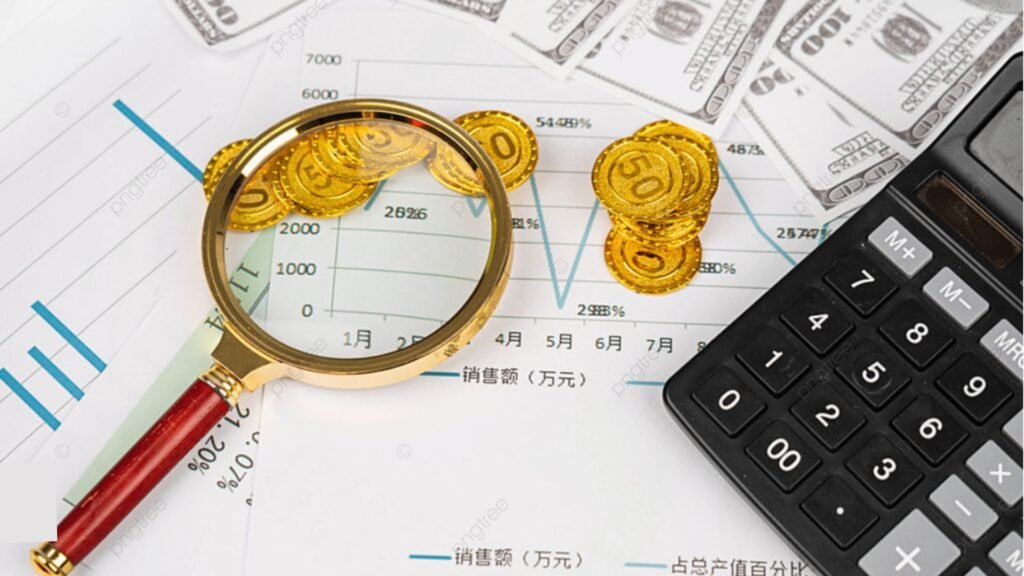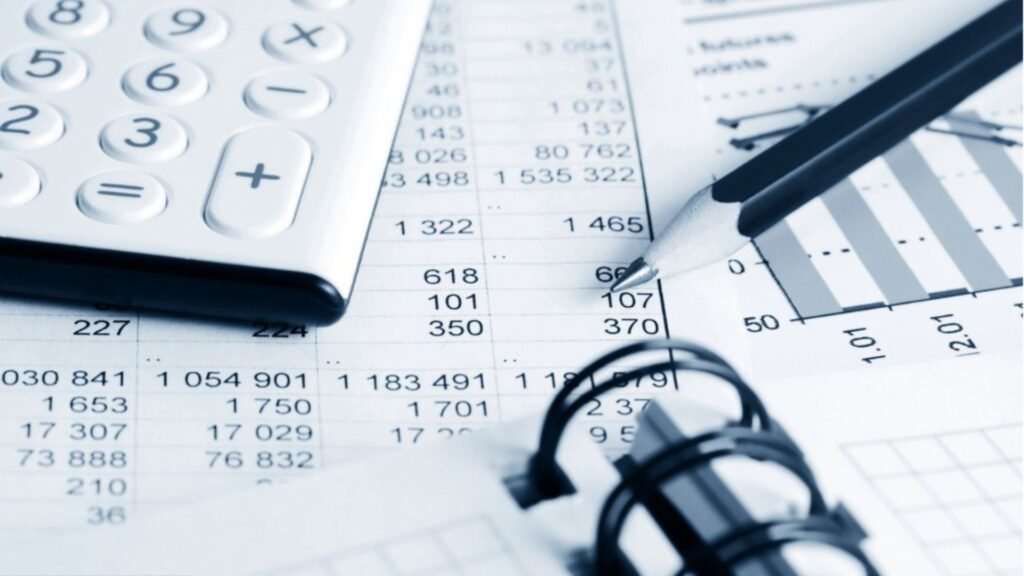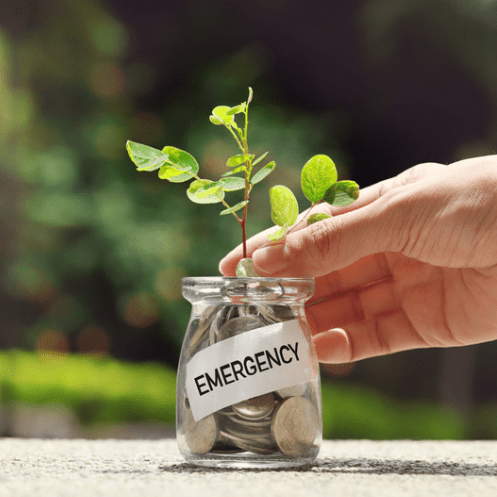In today’s uncertain world, having an Emergency Fund is crucial for weathering unexpected storms. One of the cornerstones of financial stability is the emergency fund. An emergency fund is a beacon of financial stability and protection in a world of unpredictability and unexpected circumstances.
An emergency fund (a rainy day fund) is cash that’s set aside to cover the cost of unexpected, and often expensive, events. An emergency fund isn’t just a financial savings account; it’s a strategic guard against lifestyles’s sudden curveballs.
It’s the safety internet that softens the fall in the course of times of job loss, medical emergencies, or unexpected fees. In this comprehensive guide, Let’s start and explore the definition, importance, and step-by-step process of starting and maintaining an emergency fund that truly is best for your specific occasions and aspirations.
What is an emergency fund?
An emergency fund is essentially a stash of cash reserved for emergencies only. It’s not meant for discretionary spending or planned expenses like vacations or home renovations.
Instead, it’s there to cover urgent and unforeseen financial needs that arise without warning.
Understanding the importance of an emergency fund
An emergency fund is a pool of money that is set aside to cover unexpected expenses or financial emergencies. It serves as a financial protector, providing peace of mind and security during times of crisis.
Whether it’s a sudden medical bill, car repairs, or unexpected job loss, having an emergency fund can help mitigate the financial impact and prevent you from going into debt. Here are some examples that help to understand the importance of emergency funds.

Job loss
If your main source of income is lost, you will have access to your emergency fund. According to personal finance writer David Wright: “People have had to figure it out when they lose their job unexpectedly.”
They could have the money on hand to cover their rent, utilities, and other expenses if they had an emergency fund. Your emergency fund gives you the time you need to carefully consider your next professional move and save money in case of a work change.
Medical or dental bills
A substantial accident or an unpredictable sickness might result in large medical bills that could otherwise bankrupt you. An emergency fund can help. You can still be required to cover all or a portion of your care out of pocket even if you have dental or medical insurance.
Consider yourself scrambling to come up with the money to cover a medical emergency rather than taking care of yourself if you’re seeking reasons to establish an emergency fund. Credit cards or an advance will probably be needed in these situations, but with good crisis finance input, you should be able to discourage most of the lesser shocks without experiencing a financial lapse.
Auto repairs
Car repairs should be included in the list of reasons to keep an emergency fund, as Luken discovered. For many people, owning a functional car is essential. If you don’t own a car, you may find it difficult to go to work on time or may be forced to use an expensive ride-hailing or taxi service.
If you had the money to cover the cost of repairs up front, this alone could save you 15% to 20%. Describe an emergency fund, please. When things get hard, it’s whatever you need it to be. However, when you begin to utilize it, you may also wish to become familiar with some management strategies.
Why do you need an emergency fund?
The unpredictability of life makes having an emergency fund essential. No one can foresee when a medical emergency might occur, when the car will break down, or when a sudden job loss might happen. Without an emergency fund, you may find yourself scrambling for money, relying on credit cards, or taking out loans, which can lead to financial stress and debt accumulation.
As Walton explains, “With no emergency savings, you could be stuck paying high fees to borrow money, taking costly distributions from retirement accounts, or worse, unable to pay expenses and potentially losing your home, car, or other assets.”

Why So Much?
Many financial experts recommend saving three to six months’ worth of living expenses in an emergency fund. This may seem like a substantial amount, but it’s designed to provide a sufficient buffer to cover your essential expenses in case of stretch-out unemployment or a major financial setback.
As you know the amount of money required to populate a proper emergency fund is certainly significant, but we live in uncertain times with uncertain economies, especially in the wake of the coronavirus. Corporate loyalty is a thing of the past, and unemployment can happen unexpectedly, usually at the worst possible moment.
Even without a global crisis, emergencies such as sudden illness or disability, major car repairs, or a new roof, can be expensive, and there’s never a good time for these things to happen.
The role of an emergency fund in financial planning
An emergency fund plays a pivotal role in your overall financial plan. It serves as a financial safety net, protecting you from the impact of unexpected expenses and helping you stay on track with your long-term financial goals.
Jay Zigmont is a Certified Financial Planner® professional and the founder of Live, Learn, Plan, and Stresses. The importance of using emergency funds solely for essential needs rather than discretionary wants. He distinguishes needs as crucial expenses like repairing a damaged roof or replacing bald tires on a car, while wants include non-essential expenditures such as kitchen renovations or purchasing a new vehicle.
Zigmont emphasizes the significance of maintaining a well-funded emergency reserve, particularly during times of economic uncertainty marked by factors like inflation. He underscores the unpredictability of emergencies and advocates for building a financial cushion to weather unforeseen challenges that extend beyond job loss, reflecting on the lessons learned from recent years.
How much should you save in your emergency fund?
As you know everyone has a wish to save their emergency fund and I am here to help you and guide how to save your funds in any critical situation. Determining how much to save in your emergency fund depends on various factors, including your monthly expenses, income stability, and risk tolerance.
A general rule of thumb is to aim for three to six months’ worth of living expenses, but this may vary based on individual circumstances. Here are some special tips to use and save emergency funds in your target size and influence anytime when you want.
How much to save in your emergency fund target
To calculate your emergency fund target, start by assessing your monthly expenses, including housing, utilities, groceries, insurance, and debt payments. Multiply this amount by the number of months you aim to cover (e.g., three to six months). This will give you a rough estimate of how much you need to save.

Factors influencing your emergency fund size
Several factors can influence the size of your emergency fund, including your job stability, health status, family responsibilities, and lifestyle choices. It’s essential to take these factors into account when determining the appropriate size of your emergency fund.
How to crunch the numbers?
Once you’ve determined your emergency fund target, it’s time to crunch the numbers. Evaluate your current savings and monthly contributions to see how long it will take you to reach your goal.
You can use online calculators or budgeting tools to help you with this process. Let’s explore the concept of building an emergency fund with a fresh perspective. Just like tackling any other financial goal, it’s all about crafting a plan and putting it into action.
First things first, get a handle on your monthly expenses. Essentials like housing, transportation, and groceries usually take the biggest bite out of your budget. According to the BLS Consumer Expenditures report, the average household shells out about 62% of its pre-tax income, which sits at around $73,573 annually, on these necessities.
Once you’ve got a grip on your monthly expenses, aim to stash away an amount equivalent to three times that figure. Hitting this target is your initial milestone. To reach this three-month safety net, it’s time to kickstart your savings routine.
Best practices for starting an emergency fund
Starting an emergency fund requires discipline, commitment, and strategic planning. Here are some best practices to help you get started:
Setting up a savings account
Open a separate savings account dedicated solely to your emergency fund. Choose an account with a competitive interest rate and easy access to funds. Emergency funds should be easily accessible, meaning they’re not tied up in assets like real estate or lengthy investments.
While cash is an option, keeping it on hand might lead to temptation, so it’s not typically recommended. “I usually recommend a mix of cash and a high-yield savings account,” says Zigmont. “Keeping around $1,000 in physical cash is handy for quick emergencies.”
Interest rates on savings accounts can vary, so it’s wise to compare options before opening one. Money market accounts might also be worth considering. However, be cautious about locking your cash into short-term instruments like CDs or Treasuries.
Growing your emergency fund
If you want to influence your fund then this is the right place for you because I will explain here some tips to grow your emergency fund in a critical crisis.
Tips for quickly building your emergency savings:
Look for ways to boost your emergency fund quickly, such as cutting back on non-essential expenses, selling unused items, or increasing your income through side hustles or freelance work. If you’re just starting with your emergency fund, financial expert Amy Maliga suggests beginning with a modest amount and gradually increasing it over time.
“Considering that many Americans struggle to cover unexpected expenses of $400, aiming for an initial savings target of $500 is a practical starting point,” Maliga advises. “This amount should help you handle common emergency costs, like a standard car repair. Once you hit this milestone, keep the momentum going by consistently adding to your emergency fund with each paycheck. You can accelerate its growth by depositing any extra earnings such as bonuses, overtime pay, gifts, or income from side gigs.”
To bolster your emergency fund, Maliga recommends setting up a direct deposit that allocates a portion of each paycheck directly into your savings account. Additionally, you can automate transfers from your checking to your savings account regularly or set reminders to manually transfer funds periodically.

Balancing between an emergency fund and paying off debt:
While it’s important to prioritize building an emergency fund, don’t neglect high-interest debt. Find a balance between saving and debt repayment to avoid excessive interest charges.
The Correct Way to Putt Your Plan into Action
Putting your emergency fund plan into action requires commitment and discipline. Here’s how to do it effectively:
Set Clear Goals:
Define your emergency fund target and establish a timeline for reaching it. Break down your goals into smaller, manageable milestones to track your progress.
Create a Budget:
Develop a realistic budget that aligns with your financial goals and allows room for savings. Monitor your spending habits and look for areas where you can cut back to increase your savings rate.
Automate Savings:
Set up automatic transfers from your checking account to your emergency fund savings account. Treat your emergency fund contributions like any other recurring expense to ensure consistency.
When to use your emergency fund
As you know the understanding of emergency funds is crucial. Use it only for true emergencies, such as unexpected medical expenses, car repairs, home repairs, or job loss. Avoid falling into your emergency fund for non-urgent expenses or discretionary spending.
It’s crucial to reserve your emergency fund for genuine necessities and avoid falling into it for non-essential indulgences such as vacations, shopping sprees, or dining out.
Maintaining your emergency fund
Once you’ve built up your emergency fund, it’s essential to maintain it over time. Here are some tips for keeping your emergency fund intact:
Replenish Used Funds:
If you ever need to use your emergency fund, make it a priority to replenish the withdrawn amount as soon as possible. Resume your regular savings contributions until your fund is fully restored.
Review and Adjust:
Regularly review your emergency fund target and adjust it as needed based on changes in your financial situation or life circumstances. Aim to increase your emergency fund size as your income and expenses evolve.
Frequently Asked Questions(FAQS)
How do I know if something qualifies as an emergency for using my fund?
Determining what constitutes an emergency for tapping into your fund can sometimes be subjective. Typically, emergencies are unforeseen events that jeopardize your financial stability or well-being. These might include sudden medical bills, urgent car repairs, unexpected job loss, or essential home repairs due to damage.
Ask yourself if the expense is crucial for your immediate safety, health, or financial stability. If the answer is yes, it likely qualifies as an emergency warranting the use of your fund.
Should my emergency fund be kept in a checking account?
As for where to keep your emergency fund, while a checking account offers convenient access to funds, it may not be the most beneficial option due to minimal interest rates.
Consider storing your emergency fund in a high-yield savings account or a money market account instead. These accounts provide higher interest rates while still allowing easy access to your funds when necessary.
Can I invest my emergency fund to grow it faster?
Investing in your emergency fund to accelerate its growth is generally discouraged. Riskier investments like stocks or bonds could compromise the availability of your funds when needed most.
It’s advisable to keep your emergency fund in low-risk, liquid accounts to ensure immediate accessibility without the risk of market fluctuations.
What if I can’t afford to contribute much to my emergency fund?
Even if you can’t allocate a substantial amount to your emergency fund initially, it’s crucial to start saving what you can. Set achievable savings goals and gradually increase contributions over time.
Consistency is key, so stay committed to building your emergency fund, even if progress is slow at first. Look for opportunities to reduce expenses or increase income to bolster your savings.
How often should I review my emergency fund?
Regularly reviewing your emergency fund is essential to ensure it remains adequate for your needs. Aim to reassess your fund at least annually or when significant life changes occur.
Evaluate whether your fund size aligns with your updated expenses, income, and financial objectives. Adjust your savings strategy accordingly to maintain an appropriate level of emergency savings.
Conclusion
An emergency fund is a cornerstone of financial stability, providing a safety net for unexpected expenses and emergencies. By understanding its importance, setting clear goals, and following best practices for saving and managing your fund, you can achieve greater financial resilience and peace of mind.
Start building your emergency fund today and take control of your financial future. Think of your emergency fund as you would an insurance policy – once you’ve established it, protect it diligently.
It’s not a casual savings pot to dip into for minor expenses. As your income grows, make sure to increase your emergency fund to align with your new financial status. Reserve the fund strictly for genuine emergencies, and exercise careful spending when you do need to access it.
Keep in mind that replenishing the fund always takes longer than expected. Start saving now, even if the amount seems insignificant. Having an emergency fund significantly improves your ability to navigate crises without resorting to credit card debt or personal loans.




